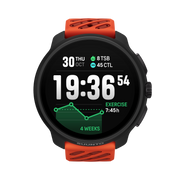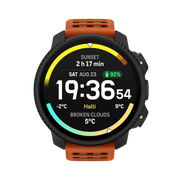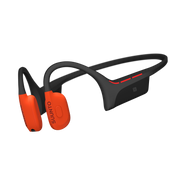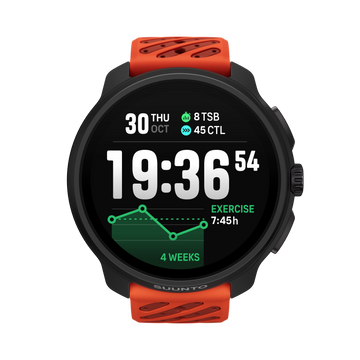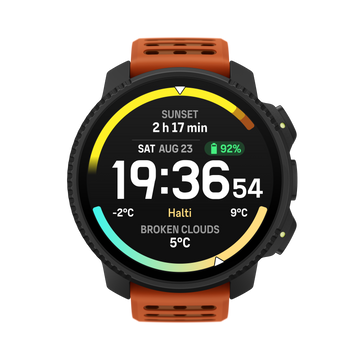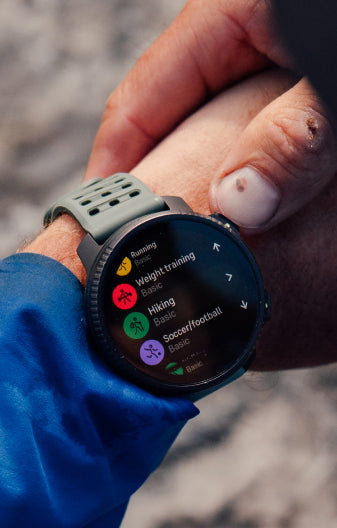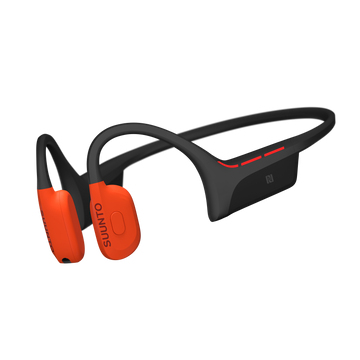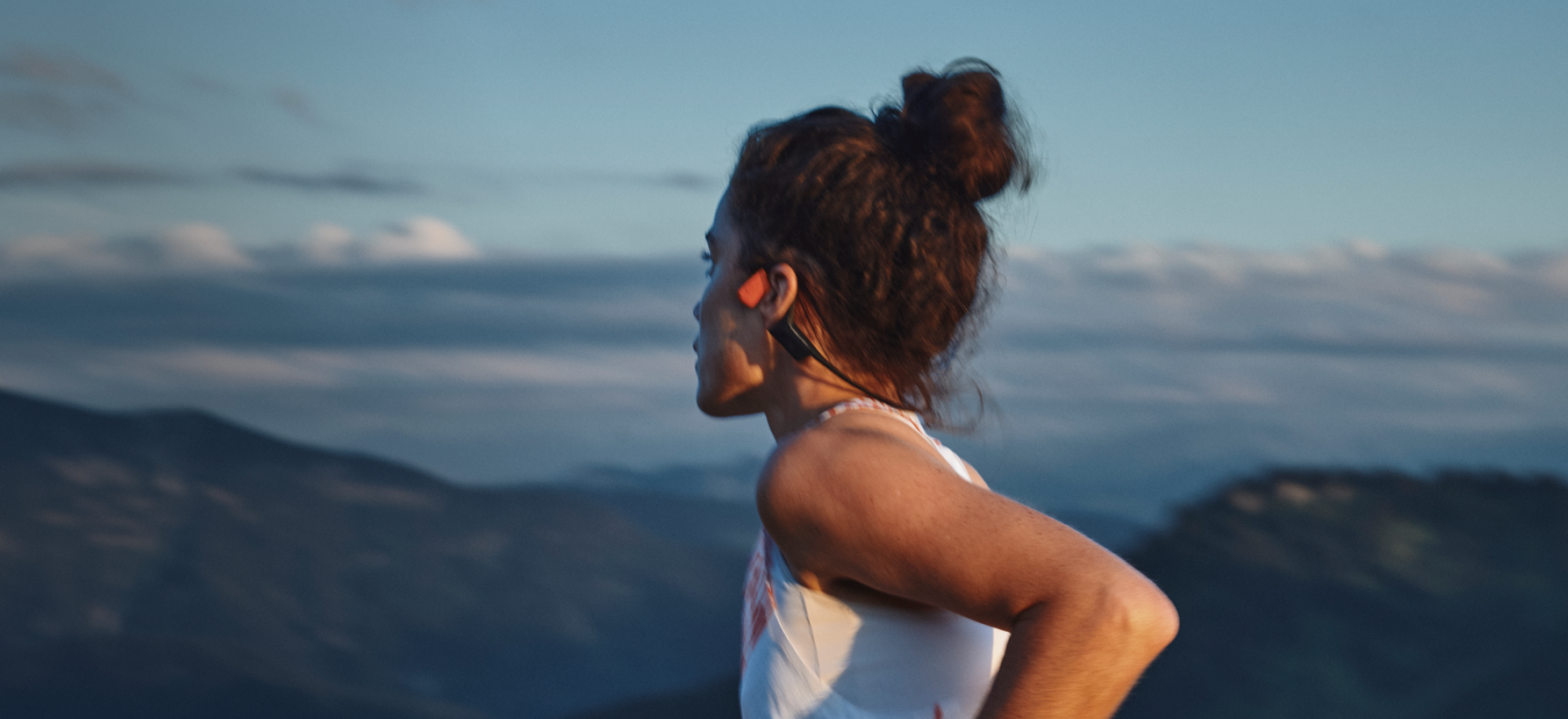

Suunto Blog

Why Ö till Ö swim-run is the must-do adventure race
On the first Monday in September one hundred teams of two will stand on the shores of Sandhamn in the Stockholm archipelago. They will face one of the toughest endurance challenges in the world, the Ö till Ö Swim Run Championship.
Ö till Ö (island to island) is a unique race in which teams of two swim and run 75 km across 26 islands. One of the teams this year is The Baltic Sea Action Group Swim Run Team.
“About 65 km of the total distance is running and 10 km openwater swimming. This means that about a quarter of the race time is spent swimming,” Juha Lindfors, a Baltic Sea Action Group Swim Run Team member says.
Finnish Lindfors and his German teammate Armin Hummel are both experienced swimmers. Both have won multiple national championship titles in swimming. Last year they took part in Ö till Ö for the first time.
“The race last year came as a surprise with only a three weeks’ notice as one of my friends who originally came up with the crazy idea of participating in the race could not make it. There was really no time to get prepared. However, we made it and the event itself was magnificent.”
“One of the most fascinating things in the race is experiencing the nature in the beautiful Stockholm archipelago and in the Baltic Sea. First feeling after the race was that we must come back again – and maybe with some more preparation.”
This year the team has two goals: to break the 10-hour barrier and most importantly to increase awareness about the state of the Baltic Sea.
“Already after the race last year I had the idea that we could also increase general awareness of the work of the Baltic Sea Action Group and get more people and organizations to commit on actions to save the Baltic Sea.
“For me this is very important as I live by the sea, sailing on it, and especially when going for a dip in the sea. I really hope that my children can keep on enjoying the same privileges.”
An important part of the swim run event are the transitions in and out of the water.
“A one minute loss in each transition adds up to a whole hour in the end,” Lindfors says.
To make the challenge even bigger, the competitors have to carry everything they need with them through out the race, which results in some interesting and novel gear solutions – they swim with their running shoes and run in wetsuits. Teams will also use hand paddles and pull buoys.
Swimming in shoes is particularly tricky.
“They slow us down about 5–10 seconds per 100 meters.”
To compensate for the added drag of the shoes, many of the teams use pull buoys to improve buoyancy. But that too comes with a price: you will then have to find a way to carry the buoyancy aid during the run stages.
Also choosing the right shoes can be tricky: they have to be superlight even when wet but also have a good grip for the wet and slippy beach rocks.
“Last year I wore orienteering shoes. This time I have chosen to race in ultralight trailrunning shoes,” Lindfors reveals.
Ö till Ö Swim Run Championships will take place in Sweden on September 1st. More info and live tracking can be found at www.otillo.se
More info about the Baltic Sea Action Group can be found here.
All images © Jakob Edholm/ÖTILLÖ13

Recover like a 'Caveman'
Getting your recovery right is almost as important as the training itself – especially if you have a packed race diary. It’s also particularly true as you get older when the body is less forgiving of strains, bruises and stiffness. So what’s the approach of the pros? Triathlete and XTERRA champion Conrad Stoltz is known as ‘the Caveman’ for his warrior spirit and ability to take hits – just the man in other words to offer some advice. He is famous for being hard on himself and his gear and in his younger days used to sleep on benches and once (willingly) in a police station before races. These days, looking after his body is the number one priority. “I believe in a good warm up and cool down after racing,” he says. “Plus regular massage and self massage on the foam roller.”Gone are the days when Conrad would blast through injuries. These days he listens to his body. “If I have even a small injury, I’ll try to get it resolved as quickly as possible,” he says.He adds that one of the most important things after a hard ride, run or swim is to take on fluids right away. “When I get back from a hard training session I’ll have a drink with carbs and some protein right away to get the recovery process started.”This is in line with the latest advice from sports nutritionists who recommend taking on fuel and fluids during a 30 minute window after exercise, or even within 15 minutes. “Within 30-40 mins I will sit down to a good meal,” says Conrad. “Caveman style – meat, potatoes, vegetables and maybe some chocolate or ice cream.”But some habits die hard. There’s no cross-training for Conrad. “I’d like to say I ride my enduro motorbike for cross training in the off-season,” he adds, “but I race all year round!”

Ice-climbing film: Velocity on ice
The new ice-climbing film of Matthias Scherer and Tanja Schmitt is out now! Watch here but don't miss our Q&A with Matthias and filmaker Franz Walter, who explain what the movie is all about. Tell us about the film
MS: The idea was to make a film that shows ice climbing as a way of life in an artistic view. We did not just want to tell another story about hard lines being climbed. We tried to capture the moments that make the magic – and show the truth of ice climbing. Ice climbing is a true adventure. We love this aspect beside the fascination of the surreal beauty that frozen water creates.FW: As a storyteller I wanted to get to know Tanja and Matthias and their passion for ice-climbing. Distilling these insights into a short-film was what I was aiming for.
Where was it shot?MS: The full film was shot in Cogne in the Aosta valley on legendary lines like 'Repentance' or 'Lau Bij' to name just a few...
How challenging was it to film?
FW: Filming in winter and ice-climbing in particular is always a challenge. Avalanche danger, danger of falling ice, humidity all-over, snowfall, frozen fingers, you name it. Yet coming home at the end of the day with some beautiful shots makes it all worth it. Were there any really difficult moments?
FW: Yes there were, although it was not during the filming itself. The first hurdle to take with every project is to find the first supporter who says, “That's a great idea and I will help you make it happen.” The second hurdle came when we actually had driven to Cogne and had way too much snow and avalanche danger to be able to stick to our initial concept. So, over the course of a night we had to make the decision to either cancel the project or re-align things according to the given conditions, which is what we did. The third hurdle was to get the narration right. Although it might seem simple and straight-forward it took a lot of time to get there.Photo: ©Franz Walter What's next?
MS: We have a trip to Canada coming from October until the beginning of December where we will hit the early ice like the last seasons. Then back in Cogne we have a challenging project coming up. It will be a full day, a long day with lots of ice to be climbed! But most exciting are our plans for Norway. We can not say more – but when it happens, it will be big and full on! FW: As I am writing this I am sitting in my van, heading north to Scandinavia for a three-week road trip, fully loaded with whitewater kayaks, climbing gear and hiking boots. We will continue doing our very best producing small, beautiful, thoughtful stories from the outdoors.

Tutorial Tuesday: Find a GPS signal more quickly
To receive a GPS signal your Suunto watch needs to locate satellites that are orbiting the Earth. The better the watch knows where the satellites are located, the quicker it will receive the signal.
Since the satellites are moving constantly, the new locations of the satellites need to be synced to your watch. Simply put, to find the satellites quicker, sync your watch regularly with Suunto app.
Suunto app sync the latest, seven-day satellite orbit forecast to your watch so it knows where to look. If you want to optimize and find the signal quickly, sync the watch as close to your activity as possible.
The data that is synced to your watch is global. So even if you sync your watch in New York and start your run 12 hours later in Chamonix, there is no need to re-sync.
Image: © Bruno LongGet support for your Suunto product at support

Video: Diving under the ice
For the Under the Pole team journeying up Greenland's west coast, the last few weeks have offered spectacular diving – and some interesting culinary discoveries. Click on the video below to see for yourself.
The French team of explorers and scientists made their way from Uummannaq to Qaanaaq, one of the most northerly villages on earth. Along the way they sampled some local cuisine – guts rolled around skin and fat – and have encountered much wildlife, including various seals and whales. A highlight was a scooter assisted dive under an iceberg.“Navigating the wild coasts is wonderful,” says Ghislain Bardout, expedition chief. “Last month we sailed throughout Melville’s Bay, the least habited and wildest region of Greenland’s West Coast. We would have loved to stay a couple of weeks more in this magic place.” The team are now at Qaanaaq's Bay where they will prepare to hibernate on board their ship, the WHY and spend the winter.
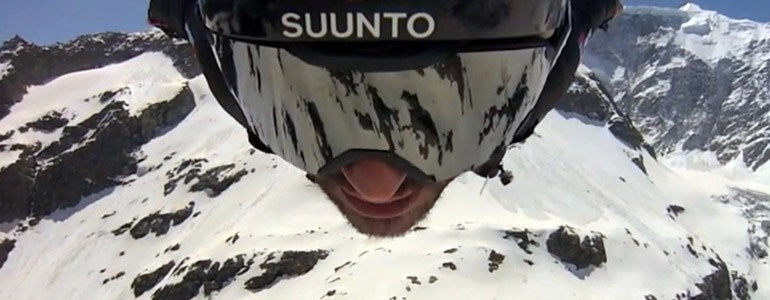
The wingsuit flight you can't miss
This is a wingsuit flight you have to see. Patrick Kerber leaps from the summit of the Ochs at 3,895 m in the Bernese Oberland for a 185 km/h flight in the Swiss Alps.Check out the video and prepare to be inspired. But the jump is only part of the story. This wasn't just an extraordinary BASE jump. This was para-alpinism. To get to the take-off site, Kerber first had to had to climb over the Fiescherhorn (4,049 m). After staying at the Mönchsjoch hut, he and partner Simon Wandeler set off at 4am. “The hardest part was to climb and cross over on the Gross Fiescherhorn. There was lots of ice and snow it took eight hours of climbing to reach the exit point. The jump-off but was covered with a lot of snow,” he adds, “so we had to dig it all out and prepare it for a good push.”What makes the jump unique is that Kerber did not have any external support and BASE jumped with all his gear.“My goal was to approach this project only with my buddy and to fly all the gear that we brought up back down – that meant crampons, ice axe, harness, laser device to measure the jump, karabiners, ice screws etc. All this stuff had to find space in the suit and this is only possible with new pockets that are integrated in the wings.”
He adds: “This is though a big deal when it comes to aerodynamics. So after climbing up for quite some time and also getting tired, you have to make sure that all the technical aspects are correct too or the suit will not fly the right way.” “When you plan a project like this, you can only take and bring the most important gear with you, but also enough to be always safe.”Naturally, that included Kerber's Suunto Ambit2.
